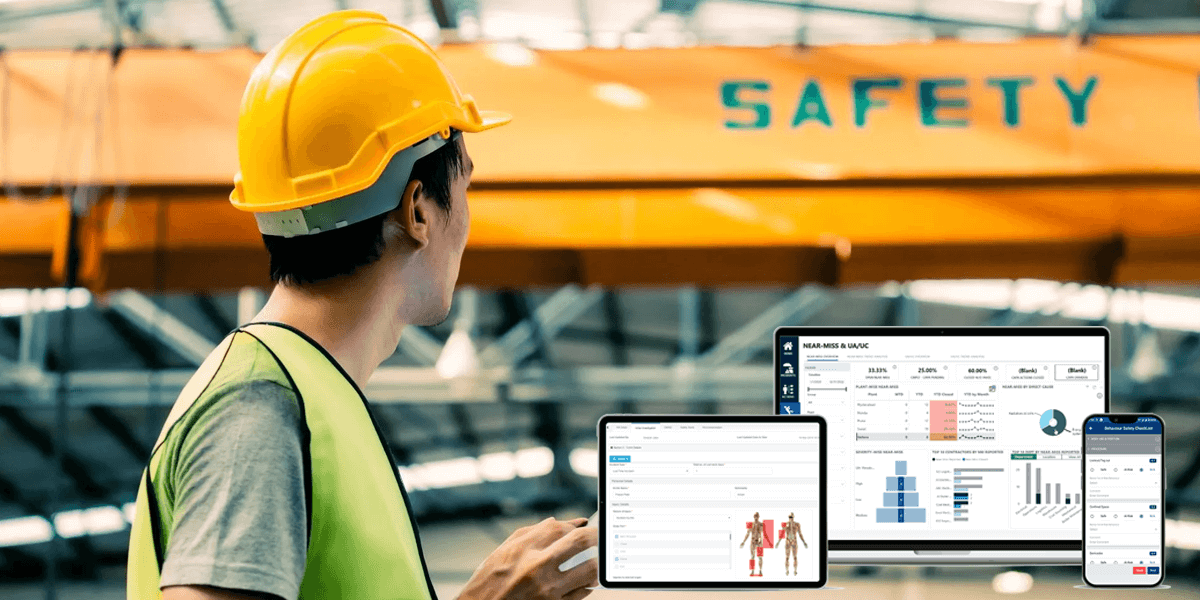
Table of Contents
Introduction
As organizations increasingly recognize the critical importance of a proactive safety culture, EHS software is becoming an essential tool in streamlining processes and enhancing compliance.
“Do your work with pride; put safety in every stride.”
The above slogan was put up at a construction workplace. It was thought-provoking. Can safety actually be acknowledged, measured, and implemented in every stride of the workplace? Are workplaces actually getting safer? Are workplaces actually prioritizing workplace safety?
Too many “actually” and too many thoughts being provoked!!
Now, if you really do your research, it tells that
Yes!!
Now the question arises of “how”?
Thanks to the evolving landscape of EHS systems, it is easier to analyze and implement proactive safety measures in the workplace. And this is exactly what our blog deals with.
As organizations increasingly recognize the critical importance of a proactive safety culture, EHS software is becoming an essential tool in streamlining processes and enhancing compliance.
Evolving Landscape of EHS Management
The evolving landscape of EHS software is redefining workplace safety management, making it more efficient, data-driven, and holistic. Let us see what is driving the evolution of EHS management.
Technological Advancements
Rapid technological developments, including AI, ML, and the Internet of Things (IoT), drive innovation in EHS software. These technologies enable real-time data collection and analysis, predictive analytics for risk management, and automation of reporting processes, allowing organizations to respond quickly to potential safety hazards.
Mobile Accessibility
The rise of mobile technology has transformed how EHS software is utilized in the field. With mobile applications, employees can report incidents, conduct inspections, and access safety resources on the go, making it easier to maintain compliance and promote safety awareness in real-time, regardless of location.
Data-Driven Decision Making
The shift towards data-driven decision-making is central to the modern EHS landscape. Organizations leverage sophisticated analytics to monitor safety metrics, identify trends, and implement evidence-based strategies.
Regulatory Compliance
With ever-evolving industry regulations, EHS software is crucial in helping organizations stay compliant. Automated compliance tracking, reporting features, and updates on regulatory changes ensure that organizations can adapt quickly to new requirements, reducing the risk of fines and penalties.
In addition to the above advancements, organizations are keen to implement everything that fits into their EHS landscape for a more secure and resilient approach.
Workplace Safety Technology Trends
Technology has reached unprecedented heights. Organizations are keen to have a proactive approach and zero-incident workplace culture. Safety is no longer on the backburner but at the forefront of all the activities. Let us look at the technological advancements that have driven a safety-first culture. These inventions have truly made the workplace safer seamlessly!
Artificial Intelligence (AI) and Machine Learning in EHS Software
AI-powered EHS systems can analyze vast amounts of historical data, including past incidents, near misses, and safety inspections, to identify patterns and trends that may signal future risks. Along with predicting and preventing accidents, AI and ML implemented in EHS software helps to;
Integration of IoT Devices in EHS Software
IoT technology enables real-time monitoring of various environmental conditions and safety factors, providing instant feedback to help organizations prevent accidents, respond quickly to hazards, and improve overall safety performance.
Examples of IoT Applications in EHS
Mobile Accessibility and Remote Solutions in EHS Software
Mobile EHS applications have become indispensable, offering on-the-go access, real-time reporting, and seamless communication between safety teams and employees.
Mobile EHS applications help to;
Enhanced Data Analytics and Reporting
By leveraging sophisticated analytics tools, EHS managers can make more informed decisions, identify risks earlier, and optimize safety strategies. Integrating customizable dashboards and real-time data visualization further enhances these capabilities, allowing for better monitoring and faster response to safety issues.
This includes;
Cloud-based Solutions
Cloud-based EHS software has become a game changer for organizations seeking more accessible, scalable, and cost-effective solutions to manage workplace safety and compliance.
It allows the
The above evolution of EHS management creates a safer workplace and promises better working conditions. Implementing one or more of the above technologies ensures employees that the organizations care for their safety. This chain reaction leads to maximized productivity and retention.
Importance of Staying Ahead in EHS Management
As EHS technology continues to evolve, now is the time to explore software solutions incorporating these trends and innovations.
By investing in advanced EHS software, you can create a safer, more innovative workplace better equipped to handle the challenges of tomorrow.
Take the next step, talk to the experts, and discover how modern EHS tools can transform your safety management processes, protect your workforce, and drive your business forward.



